Intel's vision of autonomous machines is powered by Curie and RealSense
Intel's CES 2016 keynote
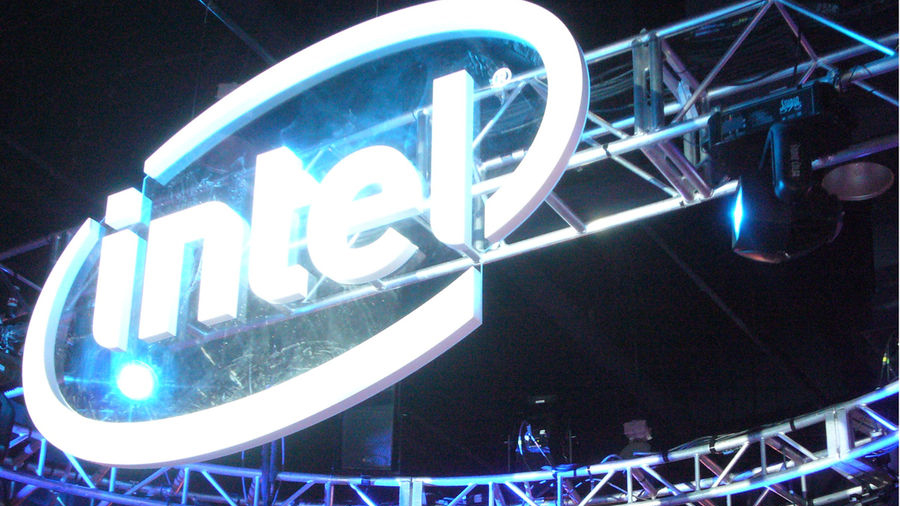
Whether it's autonomous drones or a Segway that can convert into a digital butler, Intel shows that it isn't afraid of a world where robots can sense, think and make decisions. Technologies must enable new experiences to be successful in the future, Intel CEO Brian Kraznich said in his keynote as he rode out onto the stage on a Segway-like "self-balancing vehicle."
"We believe we are entering a new era of consumer technology," he said. "Consumers are choosing experiences over products."
Part of the experience that Intel is delivering is intelligence. Not only can the self-balancing vehicle balance itself with the embedded Intel Curie sensor, it can also convert into an intelligent, autonomous home butler. The robot, which will be available to developers in the second half of the year and consumers after that, can sense and navigate through the world, avoiding obstacles thanks to the depth-percepting Intel RealSense 3D cameras.
After all the sensory information is captured, the robot can can process the data and make real-time decisions with Intel's Skylake Core m7 processor.
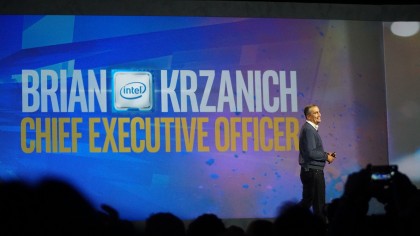
It's not just robots that are getting smarter. Intel showcased an autonomous drone that can understand the world and fly on its own. With RealSense camera, the drone can navigate through a forest of trees to avoid obstacles.
Everything today is defined by technology, but technology is not our focus, Krzanich said. The most important thing is that the technologies that Intel will show will be delivered by its partners "in the next few months." This will be "the year of amazing experiences," Krzanich said.
Sports and gaming
Showcasing how technology can be used to create more personalized human experiences, Krzanich turned to gaming where RealSense cameras can be used to scan a player and inject them into the game. In a Fallout 4 demo, Krzanich's team scanned his image, and instead of an avatar or generic image in the game, we see Krzanich's image in the middle of the game.
Are you a pro? Subscribe to our newsletter
Sign up to the TechRadar Pro newsletter to get all the top news, opinion, features and guidance your business needs to succeed!
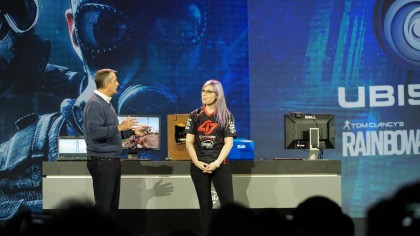
With sports, Intel says that it's technology will revolutionize how we play, experience and watch sports. Through a partnership with BMX, Curie sensors are embedded onto bikes, which will sense the movement of a bike as the driver perform tricks and stunts.
Utilizing Intel's Curie and its sensor hub, Intel will be able to give athletes real-time feedback as they perform and train. Curie is sampling today, and Intel says will ship this quarter in volume at less than $10 (£6, AU$14).
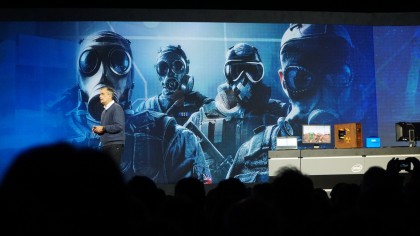
Intel also announced that it is partnering with ESPN and X-Games to bring Curie to the Aspen games next month.
For athletes, Intel is working with New Balance to bring a new smartwatch to the market. Intel's previous partnerships in this space include Fossil and Tag Heuer. New Balance will also work with Intel to launch new wearables through its Digital Sports division.
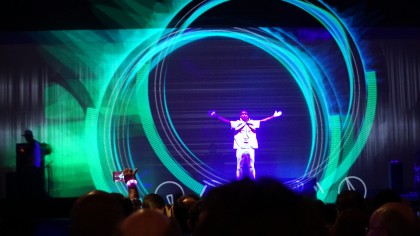
Similarly, Intel had worked with Oakley to develop an intelligent digital coach to help train athletes. The coach collects real-time sensor data and makes instant decisions on how to help motivate and push athletes, similar to a real coach.
Radar Pace uses voice control and guidance to train an athlete. It will announce real-time information, such as pace and other stats to the athlete, and it will also use this information to help customize a workout to the athlete.
Commercial applications
In addition to consumer use, Intel shows that its technology can also be used in industrial settings. In a partnership with DAQRI, Intel showed a smart helmet that is now shipping.
Like Microsoft's HoloLens and Google Glass, DAQRI can show augmented reality information, and Intel says that this is suitable for workers in the field.
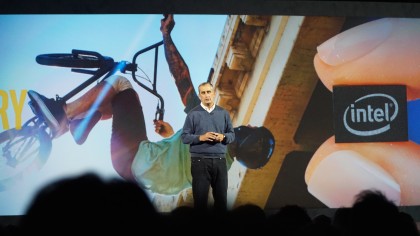
In a demo, Intel showed a field worker performing a repair. DAQRI overlays augmented reality information to guide the worker in the repair process, and the helmet can even assist the worker with the ordering of parts at the end of the job.
Diversity
Intel shows that it's ready to embrace a future of smarter, autonomous machines, but that this future has to be human and humane. Instead of announcing new goals this year, Krzanich addressed some of the goals that he brought up last year, and stated that Intel is well on its way to addressing some of the pressing problems it identified.
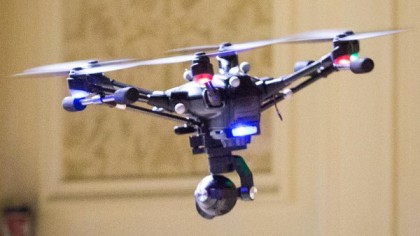
For its commitment to diversity, Intel says that it will start publishing its diversity and inclusion report twice a year, and that embracing women and minorities is part of its business plan.
Additionally, all Intel products shipping this year will contain conflict-free minerals. It has worked with its supply chain to help address the problems, rather than abandoning areas where problems occurred.